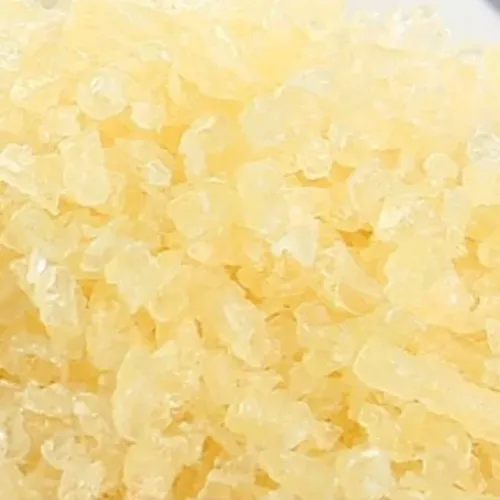Warning: Undefined array key "title" in /home/www/wwwroot/HTML/www.exportstart.com/wp-content/themes/1198/header.php on line 6
Warning: Undefined array key "file" in /home/www/wwwroot/HTML/www.exportstart.com/wp-content/themes/1198/header.php on line 7
Warning: Undefined array key "title" in /home/www/wwwroot/HTML/www.exportstart.com/wp-content/themes/1198/header.php on line 7
Warning: Undefined array key "title" in /home/www/wwwroot/HTML/www.exportstart.com/wp-content/themes/1198/header.php on line 7
- Afrikaans
- Albanian
- Amharic
- Arabic
- Armenian
- Azerbaijani
- Basque
- Belarusian
- Bengali
- Bosnian
- Bulgarian
- Catalan
- Cebuano
- China
- China (Taiwan)
- Corsican
- Croatian
- Czech
- Danish
- Dutch
- English
- Esperanto
- Estonian
- Finnish
- French
- Frisian
- Galician
- Georgian
- German
- Greek
- Gujarati
- Haitian Creole
- hausa
- hawaiian
- Hebrew
- Hindi
- Miao
- Hungarian
- Icelandic
- igbo
- Indonesian
- irish
- Italian
- Japanese
- Javanese
- Kannada
- kazakh
- Khmer
- Rwandese
- Korean
- Kurdish
- Kyrgyz
- Lao
- Latin
- Latvian
- Lithuanian
- Luxembourgish
- Macedonian
- Malgashi
- Malay
- Malayalam
- Maltese
- Maori
- Marathi
- Mongolian
- Myanmar
- Nepali
- Norwegian
- Norwegian
- Occitan
- Pashto
- Persian
- Polish
- Portuguese
- Punjabi
- Romanian
- Russian
- Samoan
- Scottish Gaelic
- Serbian
- Sesotho
- Shona
- Sindhi
- Sinhala
- Slovak
- Slovenian
- Somali
- Spanish
- Sundanese
- Swahili
- Swedish
- Tagalog
- Tajik
- Tamil
- Tatar
- Telugu
- Thai
- Turkish
- Turkmen
- Ukrainian
- Urdu
- Uighur
- Uzbek
- Vietnamese
- Welsh
- Bantu
- Yiddish
- Yoruba
- Zulu
अगस्ट . 10, 2024 22:55 Back to list
Preparation and Applications of Chromic Sulfuric Acid Cleaning Solutions for Laboratory Use
The Role of Chromic Sulfuric Acid Cleaning Solution in Laboratory Applications
Chromic sulfuric acid cleaning solution is a powerful and specialized cleaning agent utilized predominantly in laboratory environments, particularly in the preparation and maintenance of glassware and metal instruments. This solution, composed primarily of concentrated sulfuric acid mixed with chromium trioxide, is renowned for its ability to effectively remove organic residues, oils, and other contaminants that conventional cleaning agents may struggle to eliminate.
Composition and Properties
The primary ingredients of chromic sulfuric acid cleaning solution are sulfuric acid (H₂SO₄) and chromium trioxide (CrO₃). When combined, these components create a potent oxidative environment. The acidity of sulfuric acid aids in breaking down organic materials, while chromium trioxide acts as a strong oxidizing agent, facilitating the destruction of even the most stubborn residues. The resultant elixir results in a viscous, deep blue-black solution that can be both highly effective and hazardous.
Application in Laboratory Settings
In laboratories, the use of chromic sulfuric acid cleaning solution is prevalent, especially in analytical and biological laboratories where glassware must be impeccably clean to ensure accurate results
. These solutions are particularly beneficial when dealing with residues from reagents that are difficult to remove through standard washing procedures. The high oxidative potential of the solution allows it to digest organic compounds, making it invaluable when cleaning flasks, beakers, pipettes, and other glass apparatus that have come into contact with biological samples or organic solvents.chromic sulfuric acid cleaning solution

Chromic sulfuric acid is often used in the cleaning protocol for the preparation of surfaces that require high levels of sterility. It can thoroughly cleanse glassware that may have been contaminated with proteins or microbial cultures, ultimately ensuring there is no cross-contamination in experiments that rely on precise chemical reactions or biological assays.
Safety Considerations
Despite its efficacy, chromic sulfuric acid cleaning solution poses significant safety risks that must be meticulously managed. The solution is highly corrosive, presenting dangers not only through skin contact but also via inhalation of fumes. Prolonged exposure can lead to severe health issues, including respiratory problems and chemical burns. As such, laboratory personnel must implement rigorous safety protocols, including the use of personal protective equipment (PPE) such as gloves, goggles, and lab coats, as well as working within a well-ventilated fume hood.
Furthermore, due to the toxic nature of chromium compounds, waste disposal of used chromic sulfuric acid must adhere to strict environmental regulations. Improper disposal can cause serious ecological damage, leading to contamination of soil and water supplies. Therefore, many laboratories are shifting towards safer, more environmentally friendly alternatives for cleaning.
Conclusion
In summary, chromic sulfuric acid cleaning solution serves a critical function in laboratory settings, providing unparalleled cleansing capabilities for glassware and metal instruments contaminated with organic and biological materials. Its potency as a cleaning agent is matched by its potential hazards, emphasizing the need for strict safety measures and responsible handling practices. While it remains an indispensable tool in many laboratories, the ongoing evolution towards safer and more sustainable cleaning solutions may eventually see its use being supplanted. For now, however, it remains a powerful ally in the quest for purity and precision in scientific research.
Latest news
-
Certifications for Vegetarian and Xanthan Gum Vegetarian
NewsJun.17,2025
-
Sustainability Trends Reshaping the SLES N70 Market
NewsJun.17,2025
-
Propylene Glycol Use in Vaccines: Balancing Function and Perception
NewsJun.17,2025
-
Petroleum Jelly in Skincare: Balancing Benefits and Backlash
NewsJun.17,2025
-
Energy Price Volatility and Ripple Effect on Caprolactam Markets
NewsJun.17,2025
-
Spectroscopic Techniques for Adipic Acid Molecular Weight
NewsJun.17,2025

